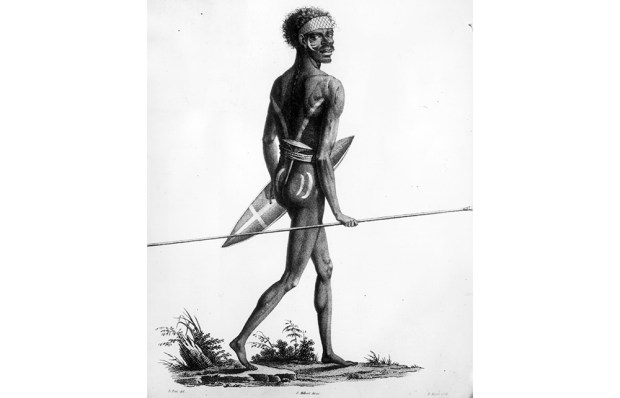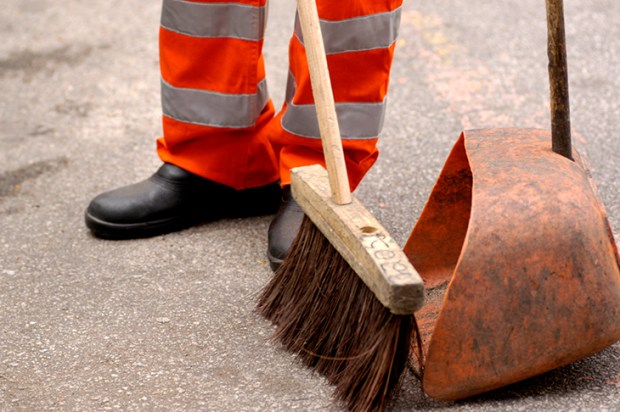‘Where did all the poof readers go?’ is not a question which would make it into many Australian publications. I say this not because The Spectator Australia is a haven for writers with a penchant for outdated and offensive nomenclature, but because the software most Australian publications now depend on for their proofreading would have either auto-corrected one word of that sentence or red-flagged it as a hate crime. I’m in no position to criticise, of course. I place the same sort of trust in the software that came with my phone and laptop, and only override its interference when it sabotages the meaning of my texts and emails. The people who read them know as well as I do that even the most eyebrow-elevating results are not Freudian slips or digital Tourette’s but mere microchip misinterpretations, and, like the man in the Paul Simon song who invited us to call him Al, we don’t find this stuff amusing any more. But I came close to smiling two Sundays ago, when, having taken my seat in my local church to mourn and celebrate the crucifixion and resurrection of Our Lord, I saw that the spell-checking of the karaoke-style captions on the giant TV screen suspended above the pulpit had changed a line in the chorus of the first hymn from ‘Now has he risen’ to ‘Nor has he risen’. This disclaimer being somewhat at odds with the traditional Easter liturgy which followed I assumed the minister, perhaps alerted to the gaffe by a member of the congregation while dispensing the sacrament, would correct it. The fact that he didn’t, and chose instead to leave a question mark over the redemption of our collective sins, made me wonder at the time if he belongs to that branch of progressive Anglican clergy which believes in accommodating even the least numinous interpretation of scripture. But on reflection I think it more likely that he spotted, sitting a few pews in front of me, John Howard, and decided to emulate the circumspection of that great man in the withholding of apologies.
The trouble with apologies is that they set precedents. If Mr Howard’s successor was right to say sorry for the removal of Aboriginal children from their communities half a century ago, then our current prime minister, a vocal supporter of Mr Rudd’s mea culpa, should not remain silent about the systematic hi-jacking of Aboriginal culture which – should the allegations prove true – is still happening in South Australia. After all, if art sold by any gallery turns out not to be entirely the work of the indigenous artists credited, but has been substantially augmented by white gallery staff to make it more attractive to white collectors, it won’t just be an outrageous fraud; it will also be an especially egregious form of paternalism. But making reparation might prove to be the thin end of a very problematic wedge. Buyers of the art would have to be compensated, of course, But there are strict rules which ensure that most of the profits from Aboriginal art sales accrue to the artist and their communities, and since they would also be victims of the fraud it hardly seems fair that they should have to give that money back. Indeed, they would be justified in suing the owners of the arts centre where such practices have occured. And what fine would any court not impose on the despoiling, for commercial gain, of the iconography of the planet’s oldest human civilisation? But the owners of this particular arts centre, like many others, are themselves Aboriginal, and their community would have been the greatest beneficiary of such transactions. Then there would be the question of setting new parameters. Specifically, the framing of legislation which determines what material assistance white people should be allowed to give Aboriginal and Torres Strait Islander artists without being deemed to compromise the authenticity of their work. Whatever else can be said about the AYPACC’s management, they certainly know their market, and they know that art which complements modern Western interior décor schemes is easier to sell than art that doesn’t. But if the addition of a red circle here and a yellow dot there by a non-Aboriginal after the real artist has knocked off for the day is ruled unacceptable, what about the supply of the canvas it is painted on and the frame it ends up in? What, for that matter, about the paint and the brushes the artist was provided with to produce it? The inconvenient truth about Australia’s indigenous art is that if it had been left in its pristine, pre-colonial state it would still be just an obscure branch of anthropology. Instead, thanks largely to the encouragement, resourcing, and marketing of enterprising white Australians, in just the last fifty years it has become a thriving export industry which provides employment and income for some of our most disadvantaged communities. And a gravy train we should take care not to derail.
Got something to add? Join the discussion and comment below.
You might disagree with half of it, but you’ll enjoy reading all of it. Try your first month for free, then just $2 a week for the remainder of your first year.














